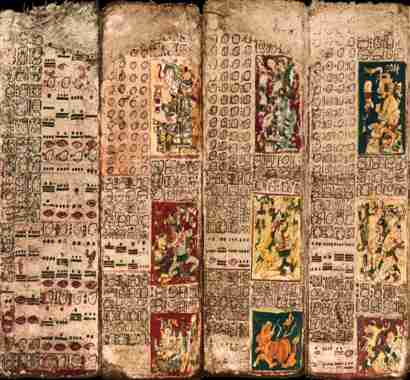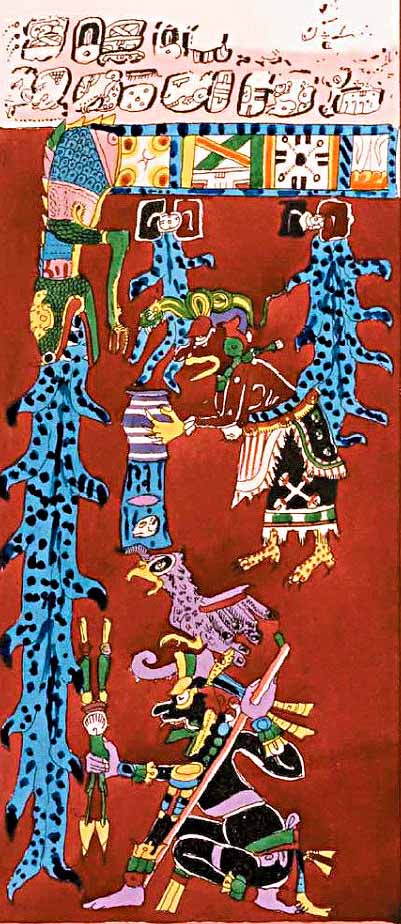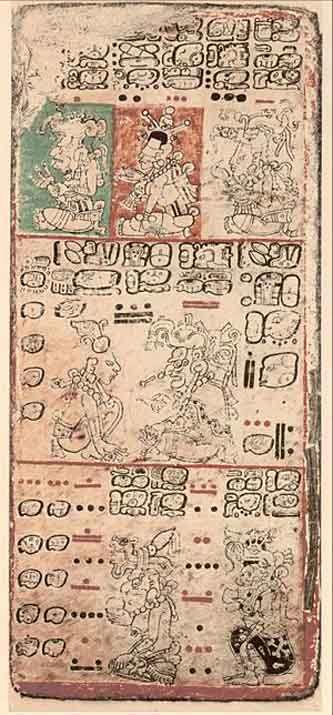| |
Cracked Mayan Code May Pave Way to Lost Gold Treasure |
|
Source: http://latino.foxnews.com
 |
|
An expert in Mayan writing believes he has deciphered a code that will lead to eight tons of gold.
Joachim Rittsteig, professor emeritus at Dresden University and forty-year scholar of Mayan history, has led a small group of German scientists on a mission to uncover a hoard of more than 2,000 gold tablets that he understands to be lost beneath the waters of Lake Izabal in eastern Guatemala.
His chief reference material, the Dresden Codex, is one of only a few major documents from which we have pieced together our understanding of Mayan culture. It is the same codex that purportedly mentions an imminent apocalypse in 2012.
Rittsteig's interest, however, stems from mention of a city that housed the tablets that sank beneath the lake after a devastating earthquake in 666 BC.
Led by Joachim Rittsteig, an expert in Mayan writing, a group of scientists and journalists left Germany Tuesday, on a mission to Guatemala in search of a lost Maya treasure allegedly submerged under Lake Izabal.
According to the German newspaper Bild, which sponsored the expedition, the expedition includes two reporters from the publication, a photographer, a television camera, and a professional diver who will submerge into Lake Izabal in an attempt to find eight tons of gold said to have been lost there.
The expedition is led by Joachim Rittsteig, an expert in Mayan writing, who claims to have cracked the famous Dresden Codex and discovered specific information in one of its chapters that leads to a treasure in Lake Izabal.
"The Dresden Codex leads to a giant treasure of eight tons of pure gold," said Rittsteig, who has spent more than 40 years studying the document, to Bild.
A professor emeritus at Dresden University and author of various publications about the Maya culture, Rittsteig stressed that "page 52 talks about the Maya capital of Atlan, which was ruined by an earthquake on October 30th in the year 666 BC. In this city, they kept 2,156 gold tablets on which the Maya recorded their laws."
The treasure sank, along with the city, into the waters of Lake Izabal, located in eastern Guatemala. But the German academic claims to have found the remains thanks to radar images taken in the area.
Rittsteig calculates that "just the gold in the tablets is estimated to be currently worth up to 211 million euros (290 million dollars)."
The Dresden Codex, drafted in the year 1250 AD by Mayan priests, is one of the four major documents that remain from that culture. It has been housed by the Saxon State Library in East Germany for the last 272 years.
The code was discovered in 1739 in the possession of a wealthy man in Vienna, though no one knows how he got a hold of it. He then donated it to the Dresden Library, where it is kept under bullet-proof glass in a room with other treasured documents.

Joachim Rittsteig has dedicated most of his entire life to decoding the codex, which is composed of 74 pages, 3.56 meters long with 74 distinct hieroglyphics.
The Dresden Codex contains much of what is known of Mayan Culture, including their understanding of astrology, medicine and even the end of the world. In the last chapter, the codex describes the coming apocalypse, which it says will take place on December 12th, 2012.
WHAT IS DRESDEN CODEX
The Dresden Codex (a.k.a. Codex Dresdensis) is a pre-Columbian Maya book of the eleventh or twelfth century of the Yucatecan Maya in Chichén Itzá. The Maya codex is believed to be a copy of an original text of some three or four hundred years earlier. Historians say it is the earliest known book written in the Americas.
The Dresden Codex is considered the most complete of the four remaining American codices. The names of the codices indicate where they were kept originally. The Dresden Codex is made from Amatl paper ("kopó", fig-bark that has been flattened and covered with a lime paste), doubled in folds in an accordion-like form of folding-screen texts. The codex of bark paper is coated with fine stucco or gesso and is eight inches high by eleven feet long.
The Dresden Codex was written by eight different scribes using both sides. They all had their own particular writing style, glyphs and subject matter. The codex totals 74 pages in length. Its images were painted with extraordinary clarity using very fine brushes. The basic colors used from vegetable dyes for the codex were red, black and the so-called Mayan blue.

The Dresden Codex contains astronomical tables of outstanding accuracy. It is most famous for its Lunar Series and Venus table. The lunar series has intervals correlating with eclipses. The Venus Table correlates with the apparent movements of the planet. Contained in the codex are almanacs, astronomical and astrological tables, and religious references. The specific numen references have to do with a 260 day ritual count divided up in several ways. The Dresden Codex contains predictions for agriculturally-favorable timing. It has information on rainy seasons, floods, illness and medicine. It also seems to show conjunctions of constellations, planets and the Moon.
Johann Christian Götze, Director of the Royal Library at Dresden, purchased the codex from a private owner in Vienna in 1739. How it got to Vienna is unknown. It is speculated that it was sent by Hernán Cortés as a tribute to King Charles I of Spain in 1519. Charles had appointed Cortés governor and captain general of the newly conquered Mexican territory. It has been in Europe ever since. Götze gave it to the state library of Saxony, the Royal Library in Dresden, in 1744. The library first published the codex in 1848.
The library that held the codex was bombed and suffered serious damage during World War II. The Dresden Codex was heavily water damaged during the firebombing of Dresden. Twelve pages of the codex were harmed and other parts of the codex were destroyed. The codex was meticulously restored after this damage. According to historian Salvador Toscano, it is still a faithful representation of the precocity and elegance of the ancient Maya in spite of its restoration from severe damage.
In 2009, a History Channel presentation of "Decoding the Past", discussed the last page of the Dresden Codex. If you understand the metaphors, you will get the messages.
"The last page of the Dresden Codex shows the destruction of the world via water. Waves gush from the mouth of a celestial dragon. More flood waters pour from sun and moon symbols on the underside of the monster's body. An aged goddess also pours flood water onto the Earth. At the bottom of the picture crouches a ruler of the underworld. Above the picture, about half of the 15 glyphs have been destroyed, but a few of the remaining ones consistently refer to "Black Earth" or "Black on High"."
Download Dresden Codex

Submit News/Videos/Links |
Discuss article |
Article Link
|
More unsolved mysteries on Unexplained Mysteries
|




![]()